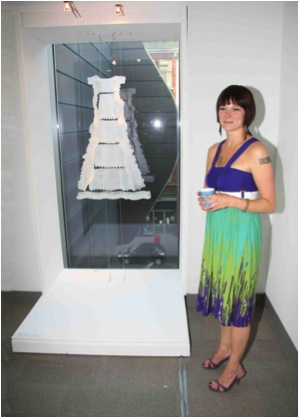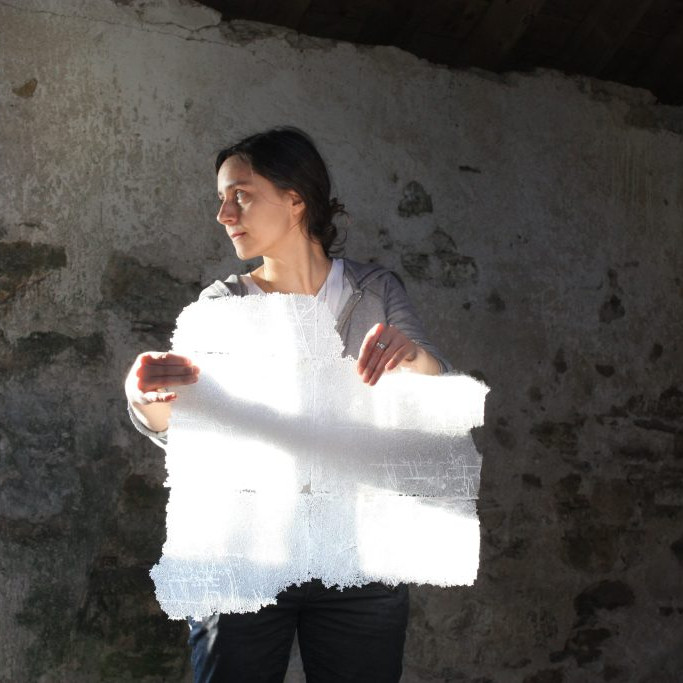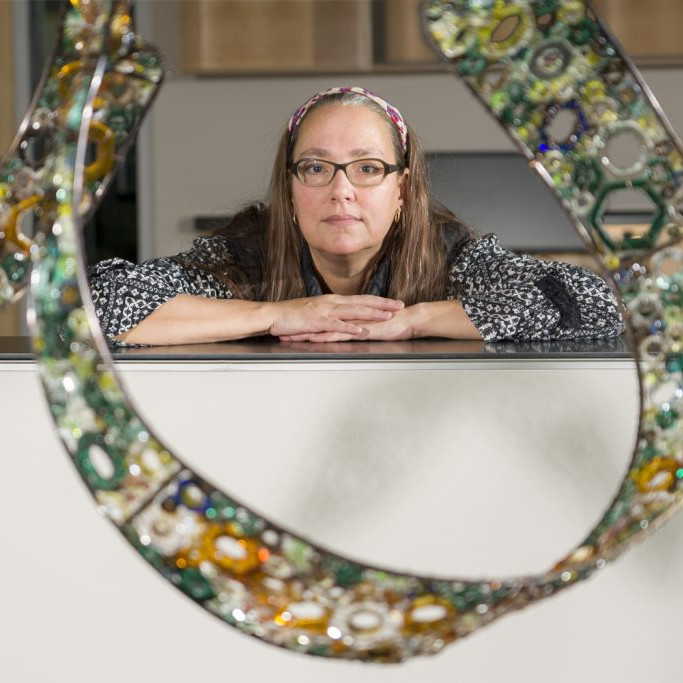Alison Lowry Glass Artist - Belfast, Ireland
Your initial interest in textiles was fostered both by family heirlooms and your study of textile through City and Guilds. Can you discuss this?
During my (Foundation year) when I was 19, I didn’t start the three year Hons course at that time. I knew I wanted to work with my hands, but didn’t like working with clay, and that seemed to be the only other option. Glass wasn’t an option at that stage- as it wasn’t (and still isn’t) taught at the University of Ulster. I changed tack completely and worked fulltime for about the next 10 years. During this time I always had this idea of going back to do my arts degree and did several short courses- The City and Guilds I creative textiles being one of them. After I got married and had my first baby I knew the time was right and I enrolled into an Art and Design BA (Hons) course at the University of Ulster. This course allowed me to flit between many disciplines- sculpture, time based media, printed textiles. In my third year I decided I wanted to work with glass- I don’t know where this desire came from! Even though we had no glass course at UU I attended a short beginners glass course off campus and then had an uphill struggle to make the glass do what I wanted. It was a battle of wills! I knew I had found my medium. The picture above is me at the opening night of the degree shows (pregnant with number 3!) with my degree show work ‘Christening Robe (for Oisin)’. My textile back ground was never very far away
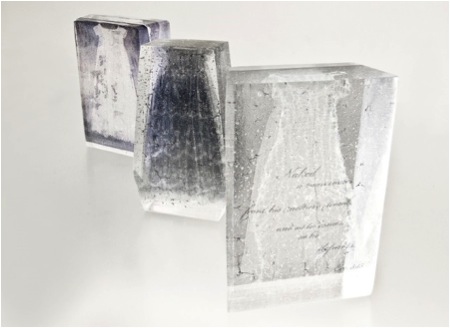
Your work has a very strong link between birth and death discuss these within the context of your art?
My mothers’ side of the family there is a very strong textile tradition. My mum has some beautiful Irish linens which would have been stitched by distant relatives – eg tablecloths that have been hand embroidered with traditional Irish whitework. During my City & Guilds in embroidery and creative textiles I knew how long it would take to embroider something so beautiful. It made me think about how fabric could tell a story. The women who had stitched this cloth had embroidered through all the bad times of her life and all the good times. The fabric was now a part of her story. Embroidery is such a lost art form, at the time it was regarded as ‘womens work’. Not ‘high art’ nor even craft. I am interested in redressing that balance through my work.
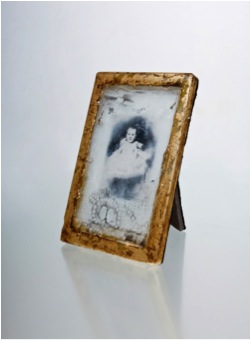
‘Memories c.1843’, 2010
During my degree I was having more children- James was born in between year two and three- and the children were being christened. The family christening robe hung in my room for a while waiting to be used. This Robe was a beautiful piece, cared for very carefully by my mother and grandmother before her. I began to think of all the children who had christened in it. It tied me to the past and my lineage. About this time my grandad, who we think was the first wearer of the robe in 1911, died and all of a sudden this robe took on added meaning. It began to symbolise life and its cycle of birth and death and how the states of birth and death are similar in their fragility and vulnerability.
You make the statement, “’Empty’ dresses hang like skeletons in closets, bound with the memories the (absent) body still holds.” Can you expand on this with the use of images.
I am interested in the space that the body leaves behind and how some clothing can frame the absence. I like the subtly referencing the body, and what leaving it absent can insinuate.
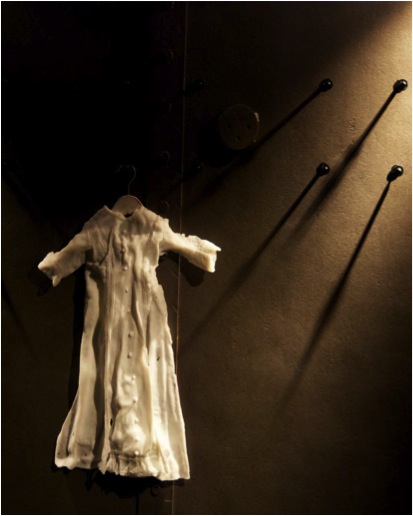
Empty Dress’, 2012, part of installation ‘Memory Vault’, at Galerie Format, Bergen
I am interested in how certain clothing- a wedding dress, a christening robe can hold special memories and every time you open the closet you instantly remember that day or that moment again.
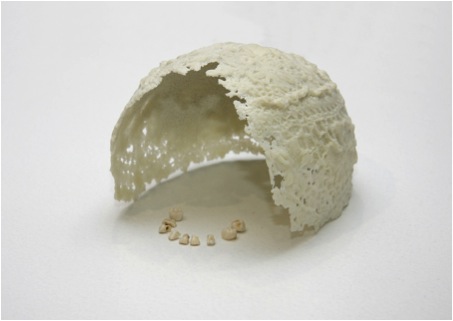
‘Jack Fell Down’ – 2011
You use glass in conjunction with photography, print making and textiles. Can you discuss this?
I think I’m always trying to find ways to express the qualities of textiles through the medium of glass. To me there’s something very similar in both materials. They both have an ‘everyday – ness’, occasionally an ‘extraordinary-ness’. There is a delicacy with both materials.
During college I realised I loved process – I don’t think there was one technician that didn’t know me by the end of the three years! I made a conscious decision early on to use only several techniques and try and get better at them… there are just too many things I would like to try! I’m not in the studio full time because of the children, so I constantly compromise what I can realistically achieve with my work at this stage of their lives.
I’m drawn to print techniques and photography because I am interested in the image. Casting photographic images into glass makes these impermanent fleeting moments permanent. I also use repetition a lot in my work, and printmaking makes the reproduction of the same image again and again very easy.
‘Pate de verre’ is a glass mould technique you use, can you discuss the technique and when and how you use it?
Pate de verre is the technique of pushing crushed glass mixed with a little glue into moulds. The result is generally thin walled vessels. The advantage of this technique over other glass casting techniques is that you can place colour very precisely into the mould and because of the relatively low firing schedule it stays in that place during firing.
I was lucky enough to learn pate de verre from Deborah Horrell after winning the Warm Glass prize in 2009. I have used this technique ever since and find it great to recreate old documents (see below) or garments.
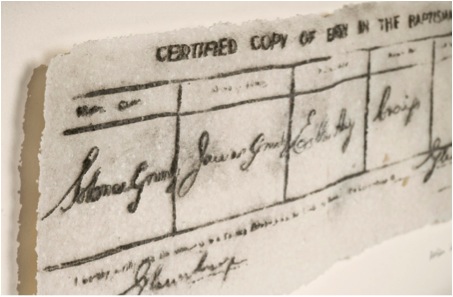
‘Born on a Monday’, 2010
How is box casting different and what have you used this technique on lately?
Box casting involves the layering up of sheet glass, damming them up in the kiln and fusing them into a block. I use ceramic decals which allows me to build up several layers of imagery throughout the block or screen printed enamels to give a similar effect (see below).
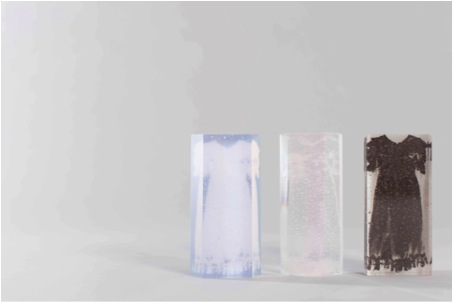
‘Dolly Mixtures II’, 2013
Finally, lost wax technique is one you are now using. Can you tell us how and why?
Lost wax allows me to make a 3d object in glass that I would otherwise be unable to achieve using open face casting. I use wax to create the ‘positive’, cast it up with a plaster mix and steam out the wax using a wallpaper stripper. This leaves a negative cavity that, in the kiln, the glass is melted into. In this example below it’s an old pair of child’s shoes.
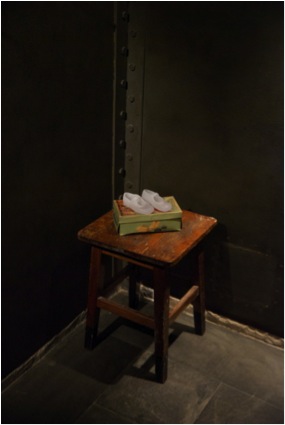
‘Found (and lost)’ , 2012. Part of installation, ‘Memory Vault’ at Gallerie Format in Bergen
‘Body Talk’ in Denmark would you explain the work you have had at this exhibition: the work load involved in the exhibition?
This exhibition is a group show which is being organised by the museum itself. They have chosen the piece, ’jack fell down’ to be a part of it. I am really excited to have been selected to be a part of this exhibition.
Off the back of it I have just heard my proposal had been accepted to show a new body of work at the start of 2015 in The Glass Museum at Ebeltoft, Denmark in ‘The Study’. The Study is a space for smaller, more experimental work or ‘works in progress.’ This is a really big development for me, as I have never had a solo show before and I hope I will also get a few more venues to take the exhibition closer to home.
You had a touring exhibition: ‘Vessels of Memory’ with Rachel Dickson. Discuss the pros and cons for both a joint exhibition and the mechanics of a touring exhibition?
Rachel and I were curated together for a joint show in CraftNI’s gallery in Belfast in 2010. We really hit it off and felt our work complemented each other, so we managed to acquire a little funding and toured the show around Ireland and the UK.
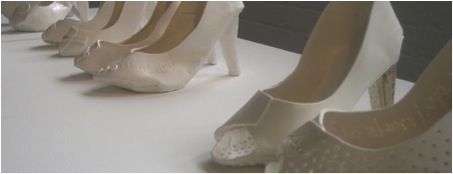
‘Worn Out’ ‘Vessels of Memory’ Rachel Dickson.
The pros for this approach are many: I wouldn’t have had the nerve to approach galleries and exhibition venues with our proposal alone. It felt safer to team up with someone else. We learnt a lot about the process of dealing with different venues and curators, how to set up and curate a show in the many different venues we went to and how to talk about your work to a variety of people. It was also interesting how the work developed and deepened as the shows went on.
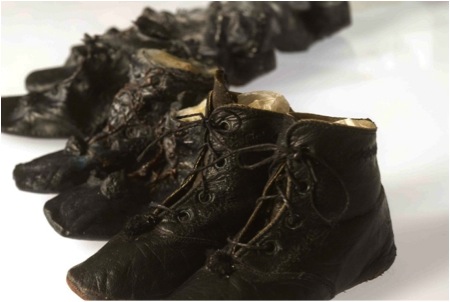
‘Marjorie’s New Shoes’

‘Vessels of Memory’ Alison Lowry
I really can’t think of any cons… we had an absolute blast!
We will be exhibiting together again next year during ‘August Craft month’ at Flowerfield Arts Centre in Portstewart, Northern Ireland. I’m really looking forward to that.
You also teach at the University of Ulster, Belfast. Can you discuss this role?
My studio has been based in the ceramics department in UU for the past two years. Within this role I have tutored students who may be interested in working with glass. We still have no specific facilities or tutors to support students who may wish to work with glass, so I have been helping them out with the technical aspects of working with glass. I also teach short courses in the University, summer courses and night classes.
Your work is in many International collections can you take one piece and expand on the when, how, why and where about this piece?
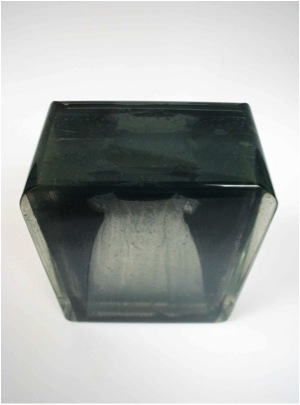
‘Shades of Grey’ 2010
This piece, ‘Shades of grey’, is in Interpol’s public art collection in the Hague.
Interpol were moving into a new office and were inviting artists from Europe to come forward and submit proposals. They were only looking for a few pieces of sculpture- maybe only 6- so I was amazed when they picked my proposal. I started straight away as this is a large piece of (box cast) glass, and the deadline was quite soon. This piece is really thick-many many layers deep. I think it might have been in the kiln for 2 weeks annealing! It was also really hard to cold work, due to the size and weight of it. My husband and I took turns on the flat bed to get it polished and off. I think we worked right up to the deadline, but it’s a great thing to have on your CV!
Can you discuss your work ‘Christening Robe’?
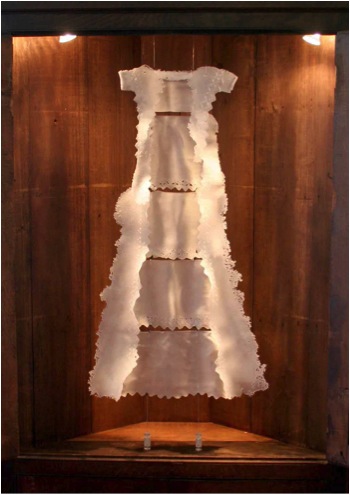
Inspiration:original antique Christening Robe ( a family heirloom)
Size: h 110 x w 80 x 15 cm
Technique: pate de verre, sandcarving
Colour sandblasted clear glass- it has the appearance of being white
Presentation: hung/suspended in cabinet.
Currently part of Arts Council of Northern Ireland Collection
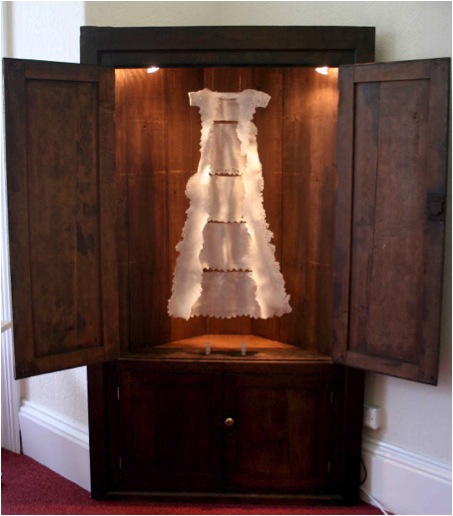
Your 95% series – can you expand on ‘Broken Record’ and how you have done these pieces?
One (in 9) refers to a statistic that one in 9 children in the UK are abused. I created nine glass skittles- I like playing with glass’s material preconceptions- and housed them in wall mounted boxes. They tell a story of an abuse and its consequences. ’Broken Record’, illustrates how people with mental health issues- for whatever reasons- can become trapped a revolving cycle.

‘Broken Record’ 2012
(detail from ‘One in 9)
Broken Record was created in two halves with bits of box cast that had text from psychologist’s reports on the layers. The text is mashed up and trapped instead the skittle.
The 95% series also refers to a similar statistic- that 95% of women who are raped will never come forward to the police. I have used multiples of a small dress- a faceless, yet identifiably ‘female’ image- in a variety of different ways.
Although I do not advertise the meaning behind individual pieces of work- I would prefer that the viewer can create their own narrative- I do believe that applied art can have a voice and address larger issues.
Can you discuss the commission you did for the Arts and Business, Belfast?
Arts and Business commissioned me to produce a series of awards for their annual awards night. I produced a prototype and they gave me lots of feedback, which was really useful, and not something that I have had before on award commissions. I was invited to the awards night – a very glitzy and glamorous evening- and it was great to see them being given out!
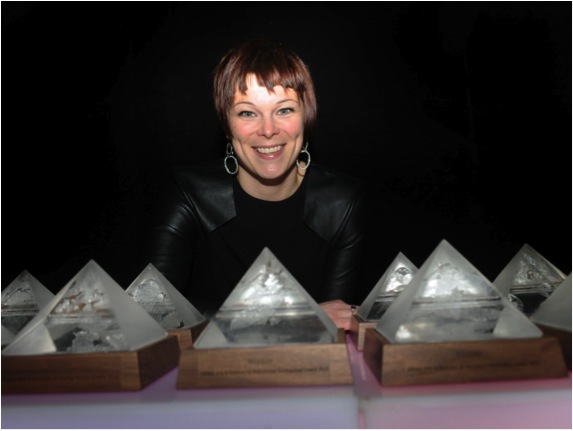
Contact details.
Website: www.alisonlowry.co.uk
Twitter: @AlisonGlassArt
Facebook:Alison Lowry Glass
Alison Lowry, Belfast, Ireland
Interview by Deborah Blakeley, August, 2013
Think a colleague or friend could benefit from this interview?
Knowledge is one of the biggest assets in any business. So why not forward this on to your friends and colleagues so they too can start taking advantage of the insightful information the artist has given?
Other artists you may be interested in:


